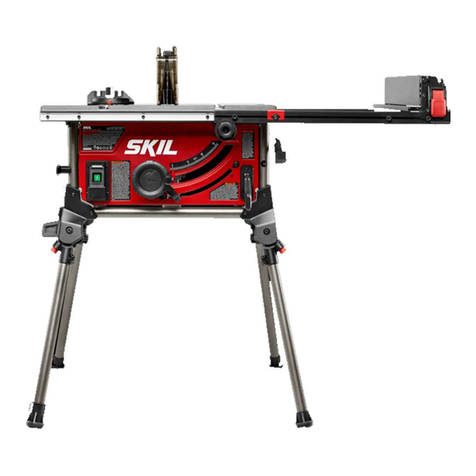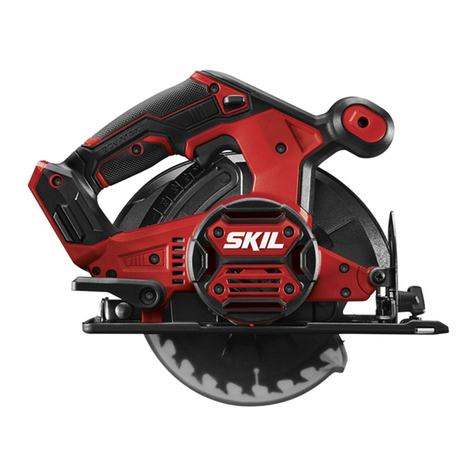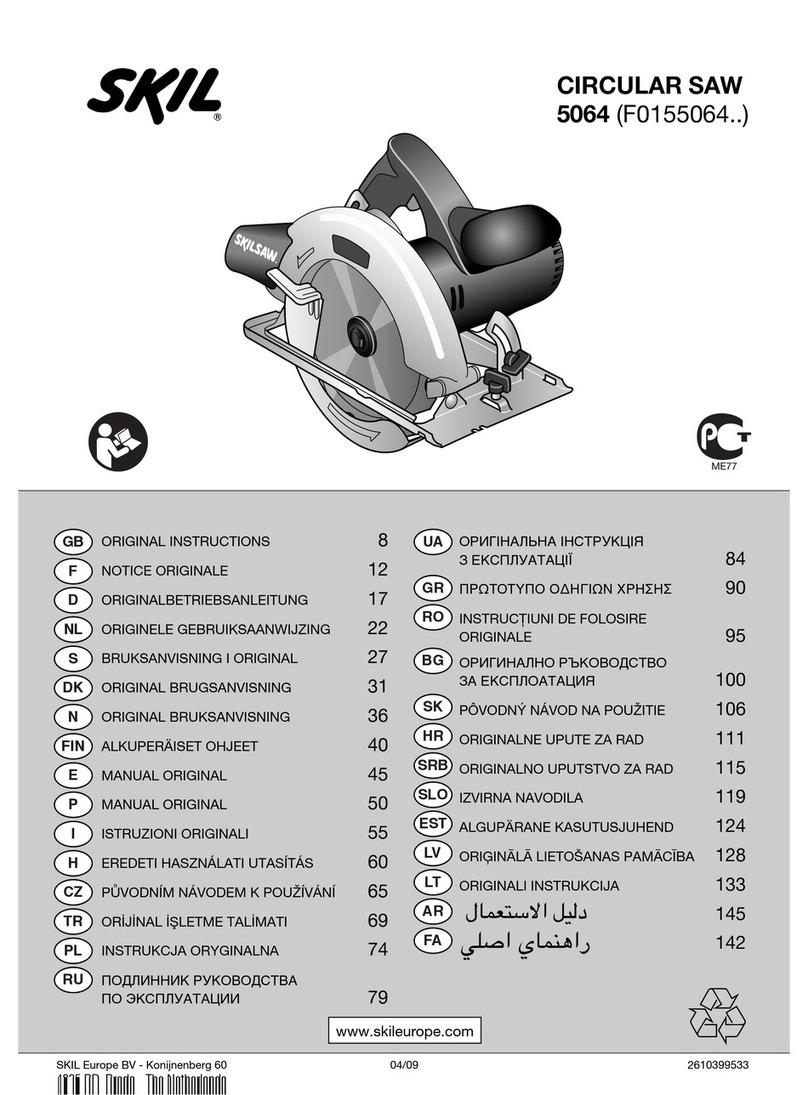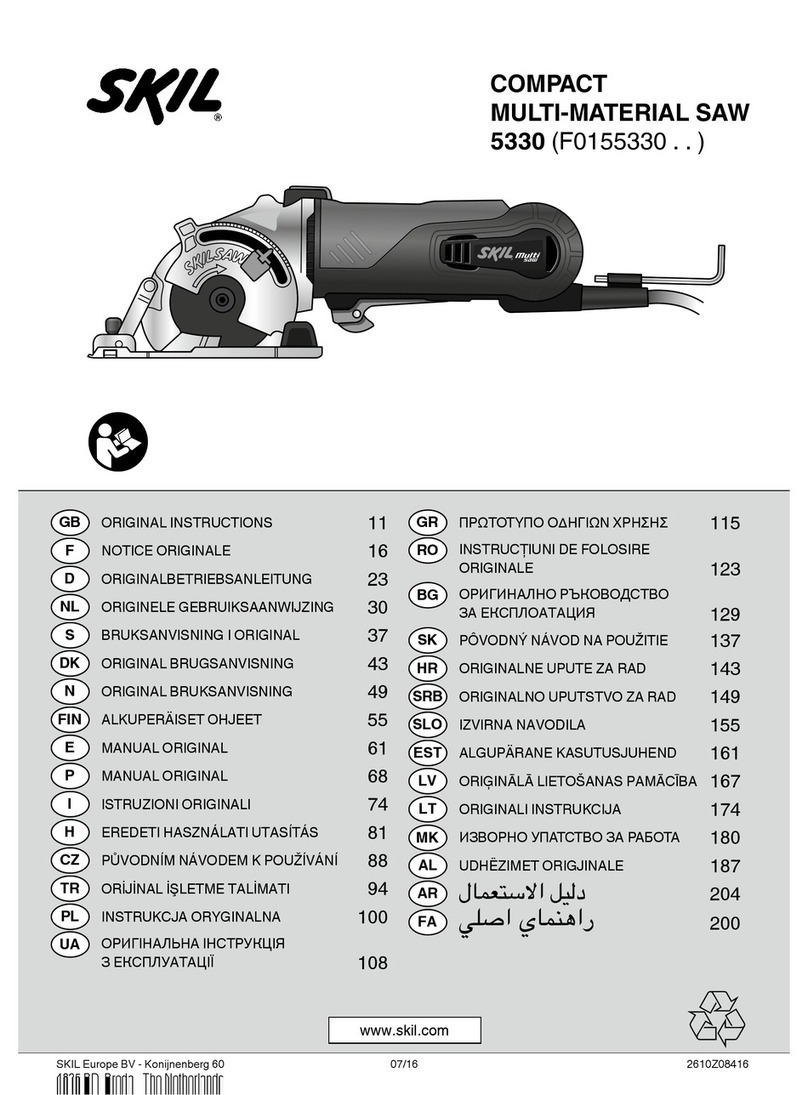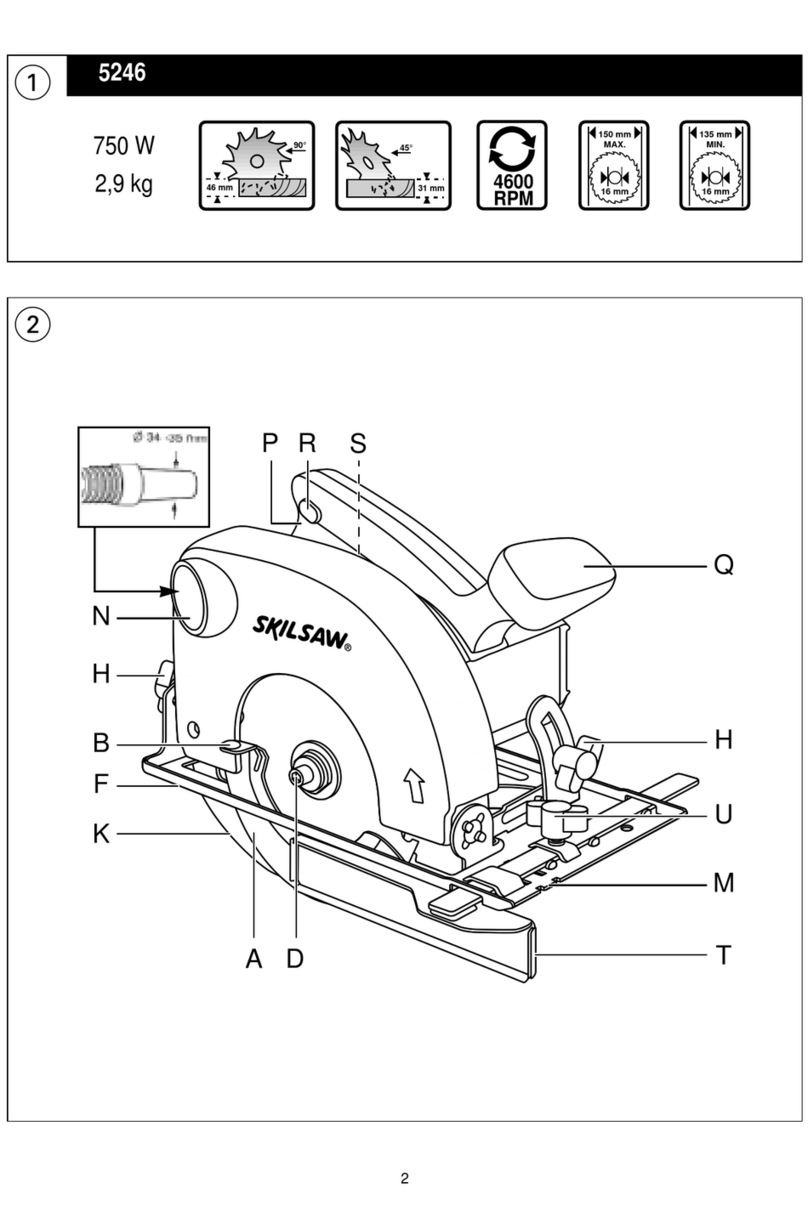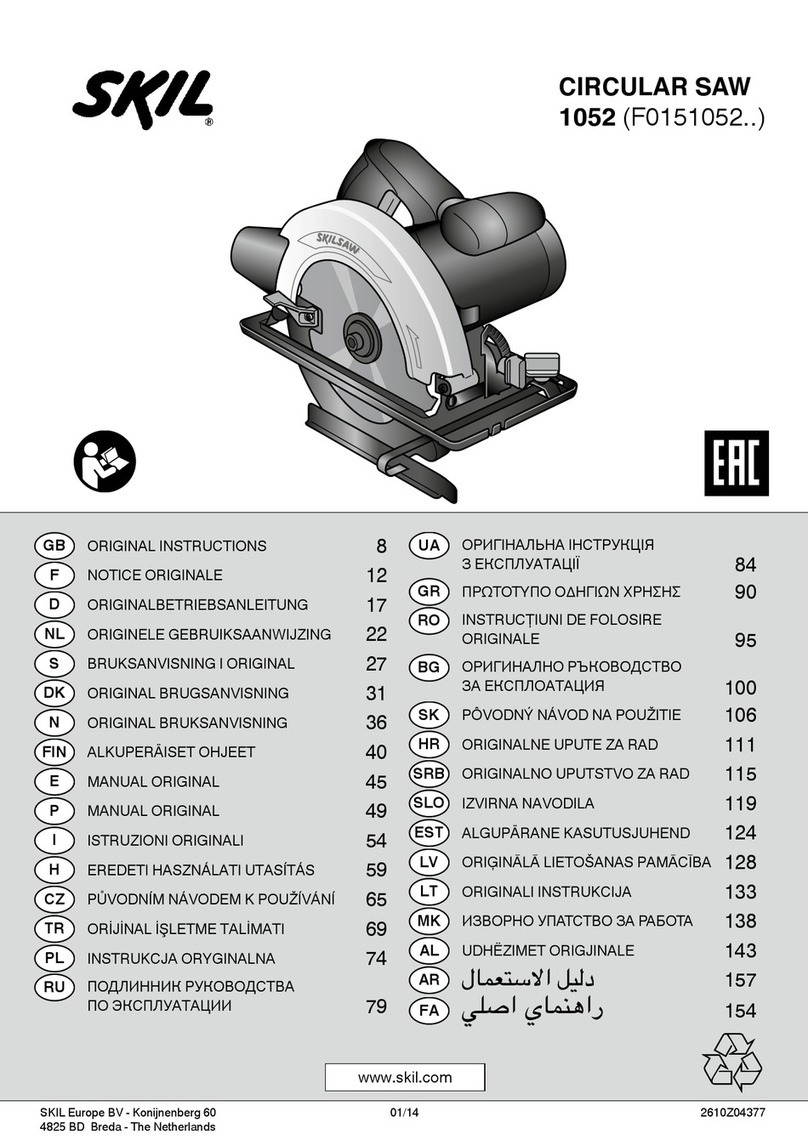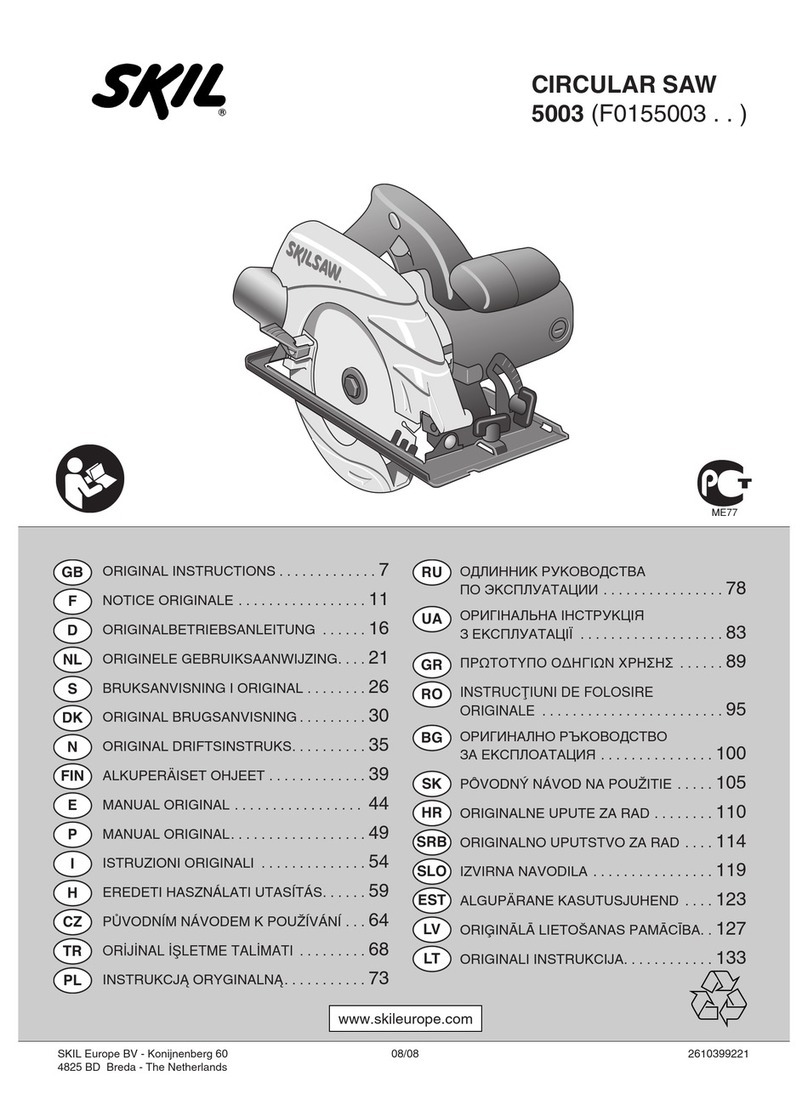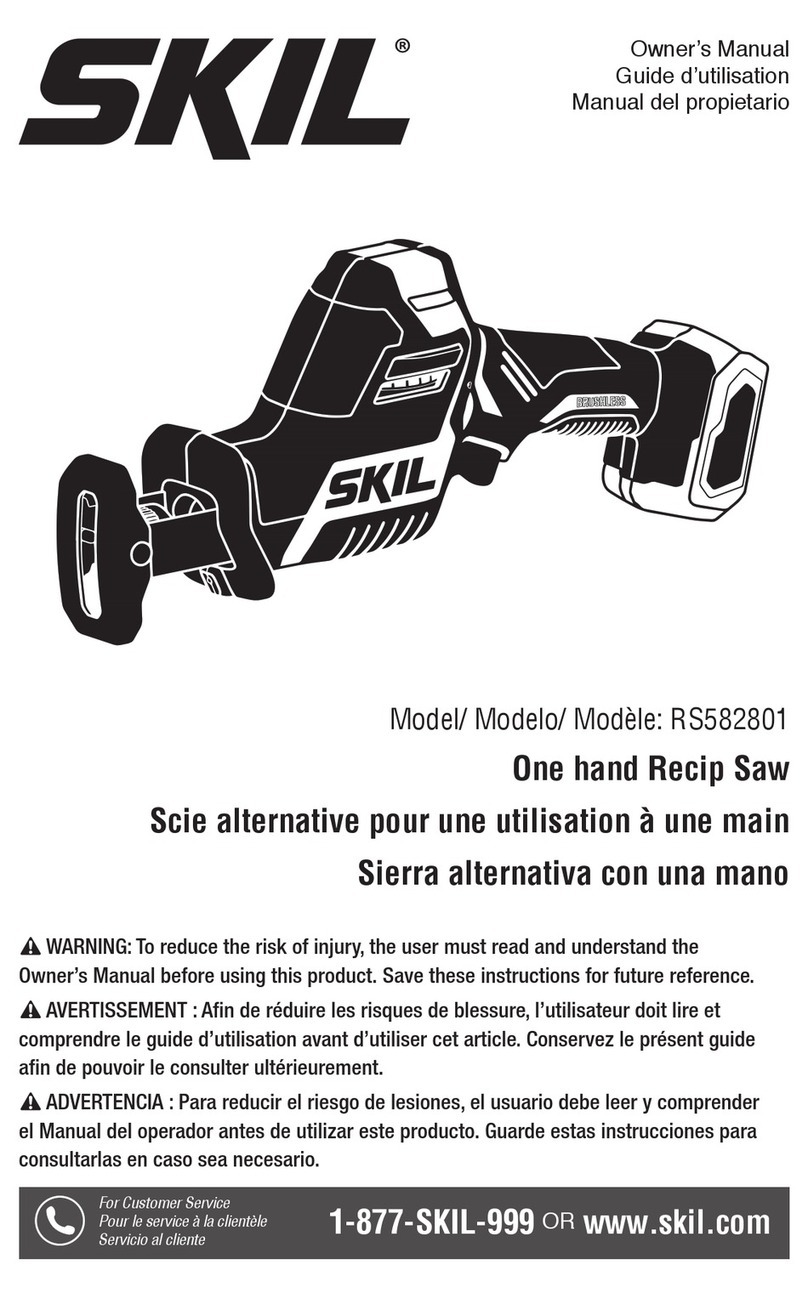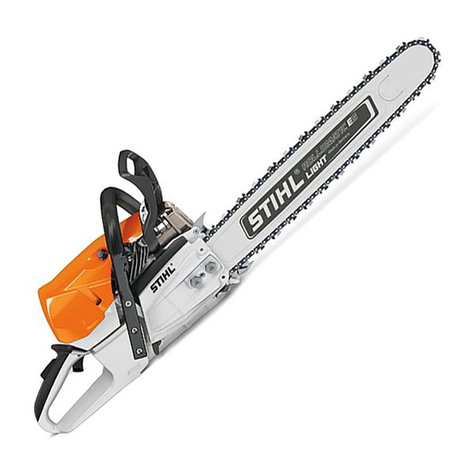8
account the working conditions and the work to be
performed.
5) SERVICE
a) Have your power tool serviced by a qualified repair
person using only identical replacement parts. This
SAFETY WARNINGS FOR CIRCULAR SAWS
1) CUTTING PROCEDURES
a) DANGER : Keep hands away from cutting area
and the blade. Keep your second hand on auxiliary
handle, or motor housing.
b) Do not reach underneath the workpiece. The guard
c) Adjust the cutting depth to the thickness of the
workpiece.
d) Never hold the workpiece being cut in your hands or
across your leg. Secure the workpiece to a stable
platform.
e) Hold the power tool by insulated gripping surfaces
only, when performing an operation where the
cutting tool may contact hidden wiring or its own
cord.
operator an electric shock.
When ripping always use a parallel guide or straight
edge guide.
g) Always use blades with correct size and shape
(diamond versus round) of arbour holes. Blades that
h) Never use damaged or incorrect blade washers or
bolt.
2) KICKBACK CAUSES AND RELATED WARNINGS
closing down, the blade stalls and the motor reaction
a) Maintain a firm grip with both hands on the saw and
position your arms to resist kickback forces.
Position your body to either side of the blade, but
not in line with the blade. Kickback could cause the
taken.
b) When blade is binding, or when interrupting a cut
for any reason, release the trigger and hold the saw
motionless in the material until the blade comes to a
complete stop. Never attempt to remove the saw
from the work or pull the saw backwards while the
blade is in motion or kickback may occur.
c) When restarting a saw in the workpiece, centre the
saw blade in the kerf and check that saw teeth are
not engaged into the material.
is restarted.
d) Support large panels to minimise the risk of blade
pinching and kickback. Large panels tend to sag under
their own weight. Supports must be placed under the
e) Do not use dull or damaged blades. Unsharpened or
Blade depth and bevel adjusting locking levers must
be tight and secure before making cut.
kickback.
g) Use extra caution when sawing into existing walls or
other blind areas.
that can cause kickback.
3) LOWER GUARD FUNCTION
a) Check lower guard for proper closing before each
use. Do not operate the saw if lower guard does not
move freely and close instantly. Never clamp or tie
the lower guard into the open position.
Disconnect the plug, raise the lower guard with the
b) Check the operation of the lower guard spring. If the
guard and the spring are not operating properly,
they must be serviced before use.
c) Lower guard should be retracted manually only for
special cuts such as plunge cuts and compound
cuts. Raise lower guard by retracting handle and as
soon as blade enters the material, the lower guard
must be released. For all other sawing, the lower guard
d) Always observe that the lower guard is covering the
blade before placing saw down on bench or floor.
An unprotected, coasting blade will cause the saw to
released.
ADDITIONAL SAFETY WARNINGS
GENERAL


